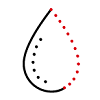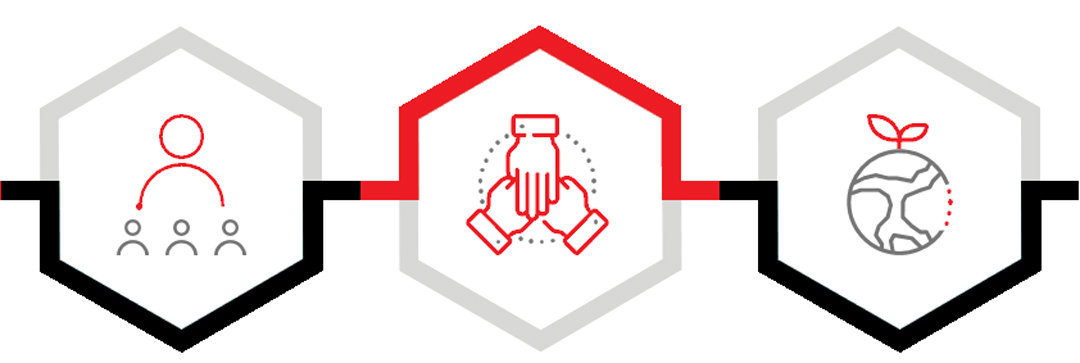Decode the Circular Economy and REthink the future
Transitioning to the Circular Economy is critical to ease demand on our planet’s natural resources and deliver sustainable economic growth. Regenerative by design, the objective of the transition is to minimise waste while providing a new world of opportunity for investors where preservation drives prosperity.
HSBC Asset Management is decoding the Circular Economy to enable investors to rethink their investments and become part of the solution. As part of this move forward, we have launched our HSBC GIF Global Equity Circular Economy fund.
What is a Circular Economy?
The demand on our planet’s natural resources is unsustainable.*
Feeding into the desire for positive change, the Circular Economy helps conserve and optimize finite resources while opening up investment opportunities and delivering sustainable economic growth.
*Data as at April 2020. Source: Message for Earth Day 2020
Circular economy
Why should we act now?
*Data as at April 2020. Source: Message for Earth Day 2020
Current linear model: take, make, use, waste

|
|
Exhaustion of natural resources and water pollution
|
|
|
Soaring CO2 emissions and waste
|
|
|
Deterioration of Biodiversity and living conditions
|
Society is increasingly embracing the circular economy transition
Regulations and Governments worldwide are moving fast forward on Circular Economy
|
Society calls for action…
|
More investors and companies are looking into circular economy integration
|
1: January 2022, Visualized: The Circular Economy 101
2: June 2019, Plastic pollution facts and information
3: June 2022, Climate Change - United Nations Sustainable Development
4: May 2022, Waste and recycling
*IPCC = Intergovernmental Panel on Climate Change, **KPIs = Key Performance Indicators Source: HSBC Asset Management. June 2022. The commentary and analysis presented in this document reflect the opinion of HSBC Asset Management on the markets, according to the information available to date. They do not constitute any kind of commitment from HSBC Asset Management.
Circular Economy helps resolve the world’s most pressing challenges
Circular Economy delivers on several UN Sustainable Goals, especially:
Goal 12: Responsible Consumption and Production
Every second, the equivalent of a rubbish truck load of clothes is burnt or buried in landfill.
 In a circular economy for fashion, products are used more, made from safe and recycled or renewable inputs, “made to be remade”, recycled or composted. Hazardous substances to health or the environment are designed out3.
In a circular economy for fashion, products are used more, made from safe and recycled or renewable inputs, “made to be remade”, recycled or composted. Hazardous substances to health or the environment are designed out3.Goal 6: Clean Water & Sanitation
72 per cent of all water withdrawals are used by agriculture4. The most impacted regions (West Asia, Pacific) export scarce water through food and cotton products to net importers like Europe and North America.
 Efficient textile and food production means massive decrease in water stress in Asia.
Efficient textile and food production means massive decrease in water stress in Asia.
1: January 2022, Visualized: The Circular Economy 101
2: The Global Circularity Report 2021
3: Source: Fashion and a circular economy | Ellen MacArthur Foundation
4: February 2021, Scarcity | UN-Water
Source: HSBC Asset Management, June 2022. The commentary and analysis presented in this document reflect the opinion of HSBC Asset Management on the markets, according to the information available to date. They do not constitute any kind of commitment from HSBC Asset Management.
Hear from our expert
Bénédicte Mougeot, Portfolio Manager and Head of Climate Equity
Getting to know the Circular Economy
An opportunity for investors
Investing in solutions to the long-term sustainability challenges we face offers an added benefit for those who want their capital to contribute to improved outcomes beyond investment returns.
Companies
|
|
|
* ROCE = Return on capital employed
Customers
|
|
|
Society
|
|
|
Key Risks and Summary Risk Indicators
The value of investments and any income from them can go down as well as up and investors may not get back the amount originally invested. Further information on the potential risks can be found in the Key Information Document (KID) and/or the Prospectus or Offering Memorandum.
- Capital loss risk: It is important to remember that the value of investments and any income from them can go down as well as up and is not guaranteed. Equity risk: Funds that invest in securities listed on a stock exchange or market could be affected by general changes in the stock market. The value of investments can go down as well as up due to equity markets movements
- Small & Mid cap risk: Please note that the fund is invested in securities issued by companies which, due to their small or mid market capitalization, are less liquid and may present higher risks
- Foreign Exchange risk: Where overseas investments are held, the rate of exchange of the currency may cause the value to go down as well as up. Variations in exchange rates between currencies can have a significant impact on the performance of the products presented
- Emerging market risk: Investments in emerging markets have by nature higher risk and are potentially more volatile than those made in developed countries. Markets are not always well regulated or efficient and investments can be affected by reduced liquidity
- ESG risk: "sustainability risk" means an environmental, social or governance event or condition that, if it occurs, could cause an actual or a potential material negative impact on the value of the investment.
The SRI (Summary Risk Indicator) is an overall indicator of the product risk level. The scale varies from 1 (least risky) to 7 (most risky). Historical data may not be a reliable indication for the future. The rating is not guaranteed to remain unchanged and the categorisation may shift over time. The lowest rating does not mean a risk-free investment. Do not run any unnecessary risk. Read the Key Information Document.
Summary Risk Indicator (SRI) = 4 out of 7
SRI >= 4. The fund has a high risk indicator. The value of investments can go up as well as down.
Important information
HSBC GIF Global Equity Circular Economy is a sub fund of HSBC Global Investment Funds, a Luxemburg domiciled SICAV.
Before subscription, investors should refer to Key Investor Document (KID) of the fund as well as its complete prospectus. For more detailed information on the risks associated with this fund, investors should refer to the complete prospectus of the fund.
The shares of HSBC Global Investment Funds have not been and will not be offered for sale or sold in the United States of America, its territories or possessions and all areas subject to its jurisdiction, or to United States Persons.
Past performance is no guarantee of future returns. Future returns will depend inter alia on market developments, the fund manager’s skill, the fund’s level risk and management costs and if applicable subscription and redemption costs. The return, the value of money invested in the fund may become negative as a result of price losses and currency fluctuations. There is no guarantee that all of your invested capital can be redeemed. Unless stated otherwise, inflation is not taken into account.
The fund uses the swing principle calculation method which determines the net asset value of the fund. Swing pricing allows investment funds to pay the daily transaction costs arising from subscription and redemptions by incoming and outgoing investors. The aim of swing pricing is to reduce the dilution effect generated when, for example, major redemptions in a fund force its manager to sell the underlying assets of the fund. These sales of assets generate transaction costs and taxes, also significant, which impact the value of the fund and all its investors.
The fund has a redemption threshold (gate), the level at which the manager of an undertaking for collective investment in transferable securities can stagger the redemption of securities instead of proceeding immediately.
The commentary and analysis presented in this document reflect the opinion of HSBC Asset Management on the markets, according to the information available to date. They do not constitute any kind of commitment from HSBC Asset Management. Consequently, HSBC Asset Management will not be held responsible for any investment or disinvestment decision taken on the basis of the commentary and/or analysis in this document.
Tax treatment depends on The individual circumstances of each client and may be subject to change in the future.











